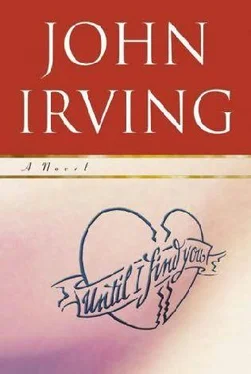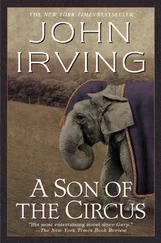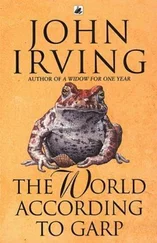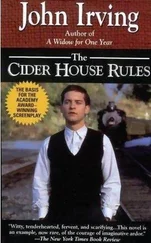“Why?” the girl asked.
“I was in a motorcycle accident,” Jack said. When he touched his side, he winced; his sudden intake of breath made the little boy squish one of his banana slices. “The handlebars went in here—they went right through me.”
“Not while we’re eating,” Myra Ascheim said, but the children and Jack-as-Rutger-Hauer ignored her.
“I thought I was going to be okay—I lost only one kidney,” Jack explained. “We have two,” he told the little boy. “You have to have at least one.”
“What’s wrong with the one you’ve got?” the little girl asked.
Jack shrugged, then winced again; after the handlebars, apparently it hurt to shrug, too. (He was thinking of the way Rutger Hauer says, “All those moments will be lost in time, like tears in rain.”) Jack said: “My one remaining kidney is failing.”
“ ‘Time to die,’ ” Myra Ascheim said, with a shrug. (Those are Rutger Hauer’s last words in Blade Runner. Myra obviously knew the movie, too.)
“Of course I could ask my brother for one of his kidneys,” Jack went on. “Only a brother’s body-part would work inside me—only a brother’s or a sister’s, and I don’t have a sister.”
“So ask your brother!” the girl said excitedly.
“I suppose I better ask him,” Jack agreed. “But you see the problem. I never gave him my bacon—not even one strip.”
“What’s a kidney?” the boy asked.
His sister carefully placed a strip of bacon beside his bananaless bowl of oatmeal. “Here—take this,” she told him. “You don’t need a kidney.”
“I’ll let you know, Jack, when I sense a surfeit of Rutger Hauer roles,” was all Myra Ascheim said, but Jack knew he’d nailed the audition.
The girl sat watching her brother eat the bacon; Jack could tell she was still thinking about the accident. “Can I see the scar, from the handlebars?” she asked.
“Not while we’re eating,” Myra said again.
Jack had been so focused on his audience of one, he’d not noticed when the man with the newspaper had left. In any performance, even a good one, somebody always walks out. But after breakfast, out on Montana, Myra was critical of Jack’s audition. “You lost the newspaper guy. He didn’t buy the handlebars, not for a minute.”
“The girl was my audience,” Jack said. “The girl and you.”
“The girl was an easy audience,” Myra told him. “You kind of lost me with the handlebars, too.”
“Oh.”
“Lose the ‘ Oh ’—it’s a meaningless exclamation, Jack.”
Jack realized that he wasn’t sure what a talent-management company did, or how what Myra did was different from what an agent did. “Don’t I need an agent?” he asked her.
“Let me find you a movie first,” Myra said. “A movie and a director. The best time to get an agent is when you don’t really need one.”
Jack would often think how his career, and his life, might have turned out differently if Myra Ascheim had found a different movie from the one she found for him—or at least a different director. But he knew that one thing you were powerless to change was your first break, and you could never calculate the influence of that initial experience on what happened to you next.
Every young actor imagines there is a special part—a groove in which he or she is a perfect fit. Well—Jack’s advice to young actors would be: Hope you never get the perfect part. The groove that Myra Ascheim found for Jack Burns (his first film) became a rut.
“ Principiis obsta! ” Mr. Ramsey would write to him, quoting Ovid. “Beware the beginnings!”
Ultimately, Jack Burns owed his success to William “Wild Bill” Vanvleck, who was also called The Mad Dutchman and The Remake Monster—the latter for his deplorable habit of stealing his stories from classics of the European cinema and crassly reinventing them for American movie audiences.
Hence the brilliant Knife in the Water, Roman Polanski’s first feature film, which was made in Poland in 1962, was remade by Vanvleck in 1989 as My Last Hitchhiker— about a couple with a troubled relationship who go off for a weekend of skiing, not sailing, and pick up a transvestite hitchhiker. Jack Burns was born to be that cross-dressing hitchhiker.
William Vanvleck was both a screenwriter and a director. Variety once wrote that The Remake Monster never knew a film or a gender he couldn’t change for the worse. But if Wild Bill was a rip-off artist, he had a survivor’s abundance of common sense; he stole only good stuff. And Vanvleck brought a European kinkiness, if not art, to American sex and violence—always with a lavishness of deceit or duplicity that Bill, and many movie audiences, loved.
For example, there was a section of Route 40 between Empire and Winter Park, Colorado—a steep road with lots of S-turns, it climbed over Berthoud Pass. In the winter, they closed the road when they blasted avalanches, and you could see back-country skiers and snowboarders hitching rides to wherever they parked their cars.
In the opening shot of My Last Hitchhiker, we see a pretty female skier wearing a backpack, her skis over her shoulder; she’s hitching a ride on Route 40. As everyone would find out, it’s not a real girl—it’s Jack Burns, and he looks fantastic.
The reason Jack got the part was not only that he had the Bruno Litkins, transvestite-Esmeralda connection; The Mad Dutchman also liked the idea of the hitchhiker being an unknown.
The couple in the car take a good look at Jack-as-a-girl. (Almost anyone would.) “Keep driving,” the woman says.
The man brakes, stopping the car. “My last hitchhiker,” he says. “I promise.”
“You promised before, Ethan,” she tells him. “It was a pretty girl the last time, too.”
As Jack is putting his skis on the roof rack of their car, they take a closer look at him. Ethan stares at the pretty girl’s breasts; the wife or girlfriend is more interested in Jack’s dark, shoulder-length hair. When Jack gets into the backseat, Ethan adjusts the rearview mirror so he can see the hitchhiker better; the woman notices this, with mounting irritation.
“Hi—I’m Jack,” he tells them, taking off the wig and wiping the mauve lip gloss off his lips with the back of his ski glove. “You probably thought I was a girl, right?”
The woman turns to watch Jack put the wig in his backpack. Jack unzips his parka, which fits him like a glove, and removes (to Ethan’s horror) his breasts, putting the falsies in his backpack with the wig. Granted, it’s a B-movie—inspiring a cult of followers—but it’s a great opening.
“Hi—I’m Nicole,” the woman in the front seat says to Jack; she’s suddenly all smiles.
Justine Dunn played Nicole; it was her last movie before her disfiguring, career-ending car crash—that famous five-car smash-up where Wilshire Boulevard tangles with the 405.
In the movie, when Ethan sees that Jack is a guy, he tells him to get out of the car.
“You picked him up, Ethan. Give the guy a ride,” Nicole says.
“I didn’t pick up a guy, ” Ethan tells her.
Jack is looking over his shoulder, out the rear window, at the S-turn behind them. “This isn’t a very safe place to stop,” he says.
“Get out of the car!” Ethan shouts.
A quick cut to the inside of a black van navigating the S-turn; some stoned snowboarders are passing a joint around. (Nicole’s line—“If he gets out, Ethan, I’m getting out with him”—plays as voice-over.)
Back on Ethan and Nicole in their stopped car: he prevents her from undoing her seat belt. The hitchhiker has already taken his skis off the roof rack; he taps on the passenger-side window, which Nicole lowers. Suddenly all-guy, Jack says: “I’m sorry for the trouble, but I catch more rides as a girl.” Then he steps back from the car. Here comes the black van!
Читать дальше












